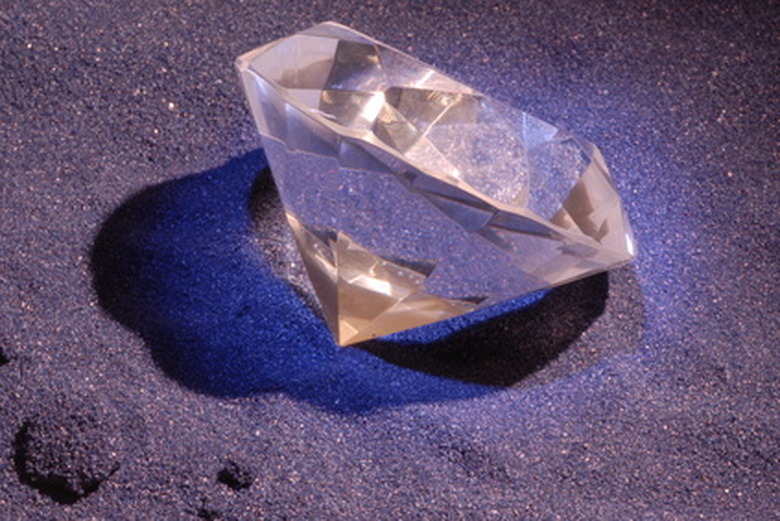Six Types Of Crystalline Solids
Crystalline solids consist of repeating, three-dimensional patterns or lattices of molecules, ions or atoms. These particles tend to maximize the spaces they occupy, creating solid, nearly incompressible structures. There are three main types of crystalline solids: molecular, ionic and atomic. Atomic solids, however, can be further distinguished according to whether they are group 8A, network or metallic crystalline solids (making six total types).
Molecular
Molecular
Molecular crystalline solids are comprised of molecules, which are held together by dispersion (or London), dipole-dipole and hydrogen-bond inter-particle forces. These are all intermolecular forces, which are considerably weaker than intramolecular forces, such as ionic bonds. Molecular crystalline solids are fairly soft, make poor electrical and thermal conductors and have low to moderate melting points. Common examples include ice (H20) and dry ice (C02).
Ionic
Ionic
Ionic crystalline solids—which are comprised of positive and negative ions held together by ion-ion attraction—come in three basic forms: with trigonal holes, tetrahedral holes and octahedral holes. All of these different arrangements typically feature smaller ions filling in the holes and larger ones making up the primary structure. Ionic crystalline solids are known for their high melting points and for being hard and brittle. Common examples include sodium chloride (NaCl), magnesium oxide (MgO) and calcium fluoride (CaF2).
Atomic
Atomic
Atomic crystalline solids consist of atoms that are held together by dispersion. These solids are soft, make poor electrical and thermal conductors and have low melting points.
Group 8A
Group 8A
Group 8A crystalline solids are a specific variety of atomic crystalline solids. They are comprised of solidified, inert noble gases [such as neon (Ne), argon (Ar), helium (He) and radon (Rn)], and can only occur at incredibly low (near absolute zero) temperatures.
Network
Network
Network crystalline solids consist of atoms that are held together by covalent bonds. They are incredibly hard, have high melting points and are poor conductors of heat and electricity. Some of the most well-known crystalline solids—specifically quartz (SiO2) and diamonds (C)—fall under the network categorization.
Metallic
Metallic
Metallic crystalline solids feature atoms that are held together by metallic bonds, which are electromagnetic in nature. These bonds give metallic crystalline structures their distinctive qualities of being ductile, malleable and strong conductors of heat and electricity. The melting points and hardness of metallic crystals can vary from low to very high and from soft to hard. Some of the most common examples include zinc (Zn) and iron (Fe).
References
Cite This Article
MLA
Devaney, Erik. "Six Types Of Crystalline Solids" sciencing.com, https://www.sciencing.com/six-types-crystalline-solids-6302115/. 24 April 2017.
APA
Devaney, Erik. (2017, April 24). Six Types Of Crystalline Solids. sciencing.com. Retrieved from https://www.sciencing.com/six-types-crystalline-solids-6302115/
Chicago
Devaney, Erik. Six Types Of Crystalline Solids last modified March 24, 2022. https://www.sciencing.com/six-types-crystalline-solids-6302115/
